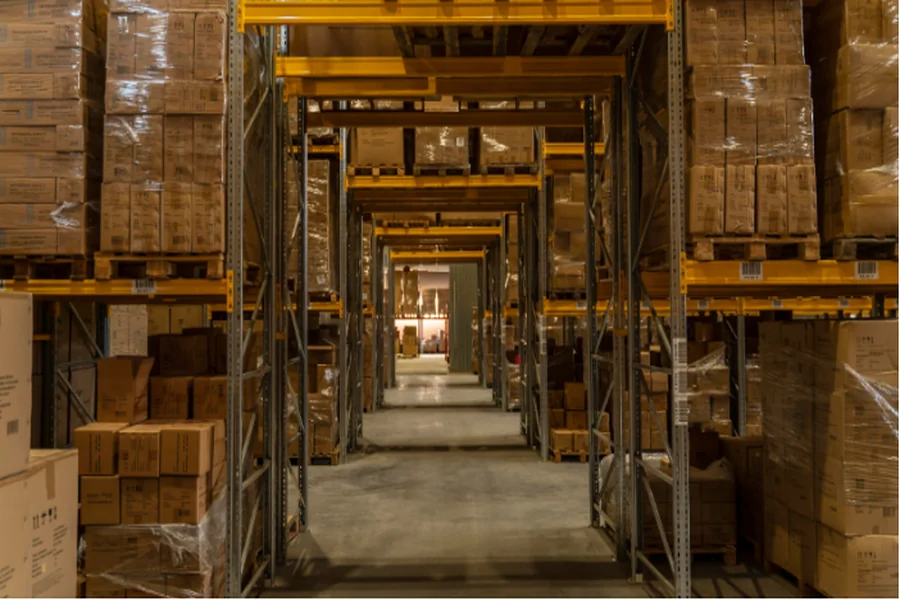If your business relies on inventory, storage space isn’t just a detail—it’s a make-or-break factor. Picture this: A cramped stockroom slows down operations and frustrates your team, while paying for unused square footage eats into profits.
Whether you run a retail store, an e-commerce shop, or a manufacturing line, finding that just-right amount of space is key.
The secret? Aligning storage with your actual needs, not guesswork. With a few smart calculations and adaptable solutions, you can build a system that scales seamlessly as your business grows. Let’s break it down.
Understanding Your Inventory Storage Requirements
You must first know what you are storing to decide the required space. Various goods have various storage needs, impacting your warehouse or storage area design and planning.
- Product size and weight are the most obvious factors. A business selling jewelry needs much less space than one selling furniture. But it’s not just about the products themselves – you also need to think about packaging, protection materials, and how items are organized.
- Product turnover rate matters just as much as size. Fast-moving items that sell quickly might not need permanent storage spots. Slow-moving inventory, on the other hand, might sit for months and need dedicated space.
- Seasonal variations can dramatically change your storage needs. A business selling holiday decorations might need three times more space in October than in March. Planning for these peaks prevents you from running out of room when you need it most.
- Special storage requirements add complexity to your planning. Some products need climate control, others require security measures, and fragile items need extra protection. These requirements can significantly increase your space needs.
Calculating Your Current Inventory Volume
Start by measuring what you already have. This gives you a baseline for planning future storage needs.
Walk through your current storage area and document these key measurements:
- Floor space – How many square feet are you currently using?
- Vertical space – How high are you stacking or storing items?
- Cubic volume – Multiply length × width × height for total space used
- Product categories – Group similar items and measure each category separately
- Seasonal inventory – Track how your inventory levels change throughout the year
Don’t just measure during your slowest period. Check your inventory at different times to understand your peak storage requirements.
Types of Storage Systems and Their Space Efficiency
Effective storage can dramatically enhance the number of items in your available space. Different systems work better for different types of businesses and products.
Traditional Shelving: Simple, Affordable, and Space-Smart
Traditional shelving remains the most common storage solution due to its affordability and simplicity. However, its design limits vertical and horizontal space utilization, typically to just 30–40% of your total floor area.
This makes it a practical choice for smaller, uniform items that don’t require specialized handling. For bulkier or irregularly shaped inventory, however, the inefficiencies become apparent quickly.
Pallet Racking Systems
These types of storage can hold larger items in bulk. Such systems can take up to 50-60% of floor space, which can reach higher than your average shelving. Pallet racks are ideal for establishments that move inventory on pallets or have large, heavy objects.
Maximizing Space with High-Density Storage
Let’s talk real numbers – when floor space comes at a premium, high-density systems become game changers. Picture mobile shelving that glides smoothly or automated retrieval systems humming in the background.
Yes, they cost more upfront, but here’s why savvy business owners invest in them: You’re not just storing items; you’re packing 70-80% of your available area with an inventory.
That’s nearly twice what conventional shelving offers in the same square footage. For growing businesses, this often means postponing expensive moves to larger facilities.
Going Vertical: The Mezzanine Advantage
Ever looked up at your warehouse’s empty ceiling space and seen dollar signs? That’s what mezzanine floors capitalize on. We’re not just adding shelves; we’re creating an entirely new working level.
Installing a mezzanine lets businesses stop turning away orders because they’d literally run out of room. The key requirements? Adequate ceiling height (we’re talking 14+ feet minimum) and inventory that won’t break your new floor’s weight capacity.
Storage Realities: What Different Businesses Actually Need
Through helping dozens of businesses optimize their storage, I’ve noticed some patterns:
- The local bakery turned e-commerce sensation? They outgrew their 1,200 sq ft storage in 8 months flat after going viral. Most small businesses start between 1,000-5,000 sq ft, but growth can change that fast.
- Retailers: That 20-30% rule? It holds true until the holiday season hits. Smart ones keep flexible overflow options.
- Online sellers: Your storage needs will surprise you. One client storing small electronics needed 40% more space than projected due to packaging requirements.
- Service businesses: The HVAC company down the road cut their storage needs in half just by implementing bin labeling and a tracking system.
The bottom line? These numbers are conversation starters, not gospel. Your unique product dimensions, how often suppliers deliver, and even your sales channels all rewrite the rulebook.

Factors That Increase Storage Space Needs
Several factors can significantly increase your storage requirements beyond basic product storage. Understanding these helps you plan more accurately.
- Receiving and staging areas need a separate space from the primary storage. You need room to unload deliveries, check inventory, and prepare items for storage. Plan for 10-15% of your total storage space for these activities.
- Picking and packing operations require additional workspace. If you ship products directly to customers, you need areas for order fulfillment that are separate from storage areas.
- Quality control and returns processing take up space that many businesses forget to plan for. Damaged goods, returns, and items waiting for inspection all need temporary storage areas.
- Requirements for safety and accessibility can cut down on your available storage space. Fire regulations need broad aisles, exit doors, and openings between storage units. These regulations generally cut down on available space by 15-25%.
Optimizing Vertical Space Usage
Many companies are not using their vertical space effectively. Generally, warehouses have ceilings between 20 and 30 feet high, yet many companies are only utilizing 8-10 feet of this vertical space.
- With proper equipment, Standard racking systems can function safely up to the 12-16 foot range. This allows you to double your storage space without any expansion to your building.
- High-bay storage systems can reach 20-30 feet or more with the right forklifts and safety equipment. These systems work well for businesses with large quantities of similar items.
- Overhead storage areas above workstations and offices can sometimes be an option for slow-moving or seasonal inventory. Just be sure the overhead storage is safe and accessible when you need to utilize it.
While assessing vertical storage, take into account your equipment for material handling. For example, a two-level system would require a forklift, scissor lift, or other lifting device to access the upper levels safely.
Planning for Seasonal and Growth Fluctuations
Your storage needs will change over time, and planning for these changes prevents costly surprises.
- Seasonal planning is critical for many businesses. Calculate your peak inventory levels and plan storage space for these maximum periods, not your average. It’s better to have empty space sometimes than to run out of room during busy seasons.
- Growth planning should consider the growth of the business itself 3-5 years out. A good guideline to calculate is to develop storage space that will be 25-50% larger than you currently need. Then, you’ll have a storage area to repurpose the space without any expansion costs that you might incur if the volume of your business grows unexpectedly.
- Flexibility in storage systems helps you adapt to changing needs. The modular shelving and adjustable racking systems can be reconfigured as your product mix changes.
Cost Considerations for Storage Solutions
Storage fees encompass far more than rent or building expenses. Knowing all the fees enables you to make wiser decisions on how much room to obtain and what equipment to install.
One way to manage expenses effectively is to explore cost-effective pallet storage system solutions that align with your operational needs and budget.
- The costs of your facility include rent, utilities, insurance, and maintenance. Depending on your location and features, warehouse space typically costs $4-12 per square foot per year.
- Costs for storage equipment can widely differ depending on your system. Basic shelving costs $100-300 per section, while automated systems cost $50,000 or more.
- Labor costs are affected by your storage system efficiency. Well-organized storage reduces workers’ time finding and moving inventory, which can save significant money over time.
- Inventory carrying costs increase with storage space. More space might tempt you to carry more inventory, which ties up cash and increases insurance and handling costs.
Finding Your Storage Sweet Spot
Here’s the truth about storage solutions – there’s no one-size-fits-all answer, but there is a right answer for your business right now.
The perfect storage solution won’t just hold your inventory – it’ll propel your business forward without breaking the bank. Take the time to plan it right, and you’ll have a storage strategy that supports your growth, not one that holds you back.






